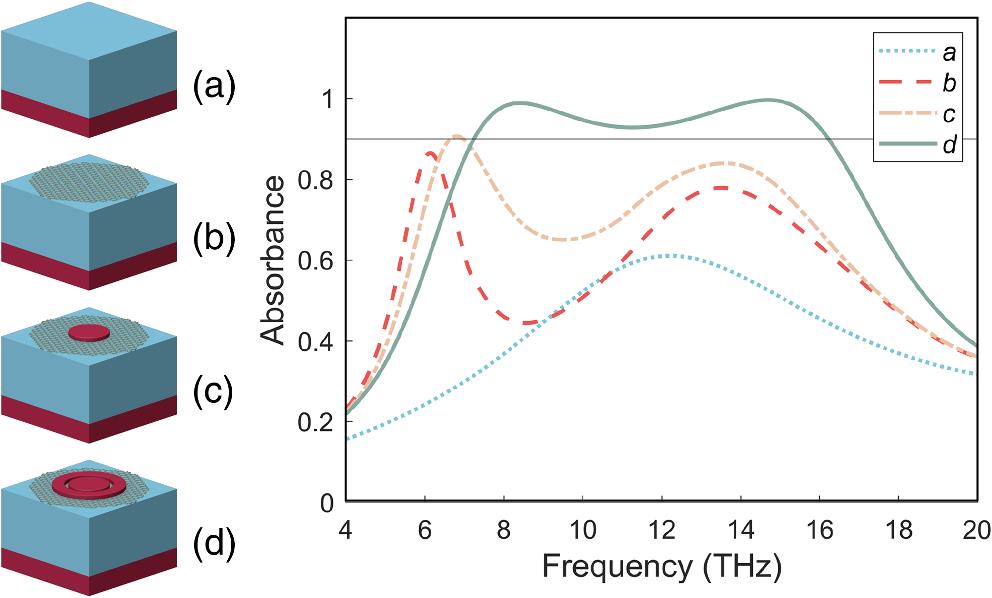Aiqiang Nie, Xiaoyong He, Wenhan Cao, "Carbon-based ultrabroadband tunable terahertz metasurface absorber," Adv. Photon. Nexus 3, 016007 (2024)
Search by keywords or author
- Advanced Photonics Nexus
- Vol. 3, Issue 1, 016007 (2024)

Fig. 1. Schematic diagram of broadband absorber structure: (a) three-dimensional structure, (b) top view of a unit cell, and (c) split diagram of a unit cell.

Fig. 2. (a)–(d) Absorption curves of evolutionary structures (
Fig. 3. (a)–(d) Influence of different structural parameters on the performance of the absorber (
Fig. 4. Absorption curves of the absorber at
Fig. 5. Equivalent parameters (
Fig. 6. (a) split diagram of a unit cell, (b) electrical circuit, and (c) comparison of absorption curves obtained by simulation and ECM (
Fig. 7. The absolute field distribution and field distribution of vector (
Fig. 8. The power loss (first row) on graphene (left) and graphite (right) and current density (second row) on the top (left) and bottom surfaces (right) in the absorber at frequency (
Fig. 9. The absorption spectrum of the absorber (
|
Table 1. Parameters of the designed carbon-based metasurface absorber.
|
Table 2. Comparison of performance parameters with those of other absorbers.

Set citation alerts for the article
Please enter your email address



